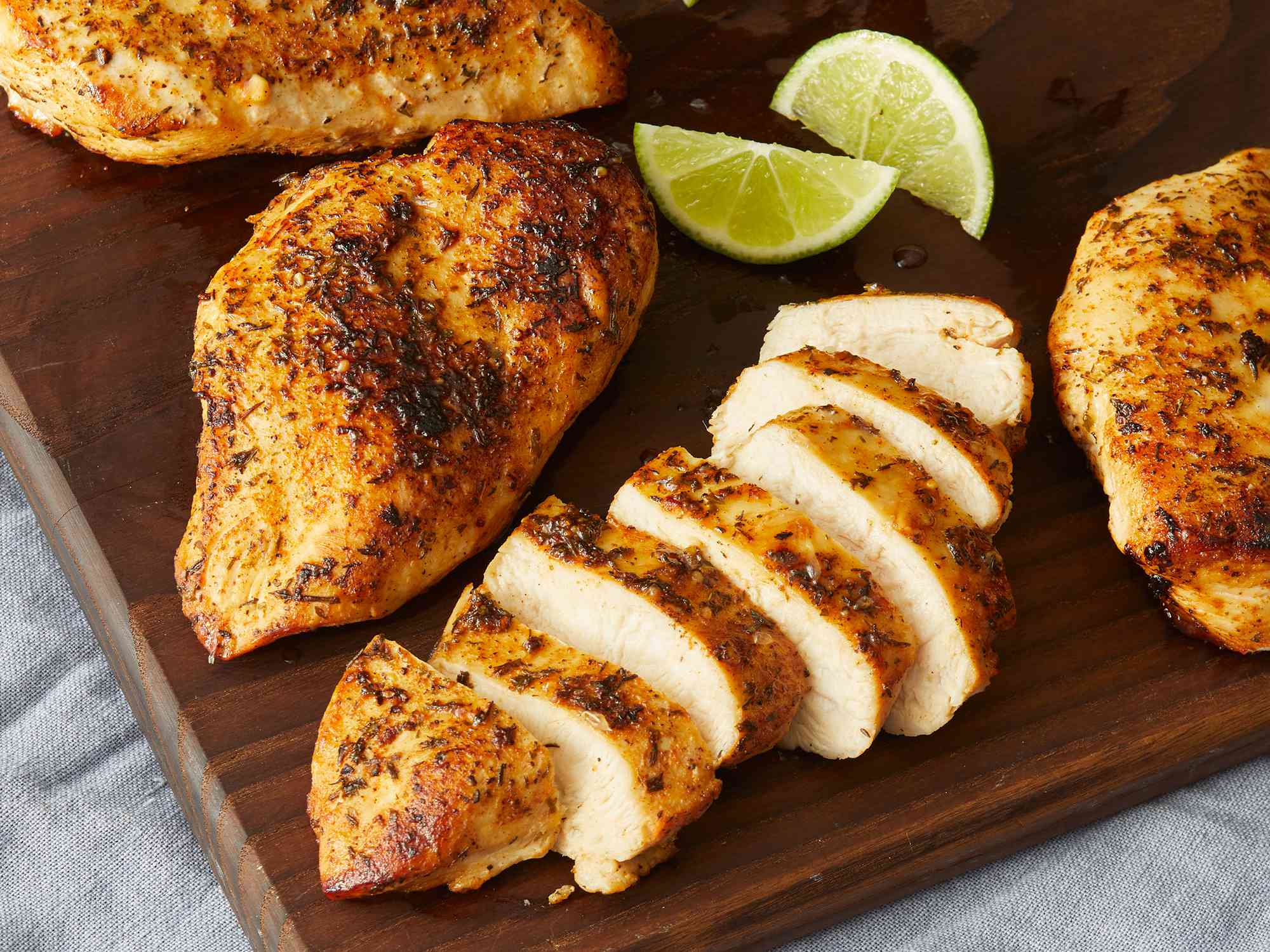:max_bytes(150000):strip_icc():format(jpeg)/44868-spicy-garlic-lime-chicken-ddmfs-Step-3X4-0264-5984811e23c34af09cca39b1a31eea04.jpg)
Lean and mild, chicken breasts cook quickly and pair well with everything from salads to pastas. But the finicky favorite is also famously prone to drying out or turning rubbery if you’re not careful. Whether you’re baking chicken breasts in the oven or pan-frying them on the stovetopcooking your chicken breasts at the right temperature is vital to ensuring they come out worthy of dicing up for your favorite chicken salad or tucking into a burrito.
To uncover that magic number, we asked Natalie GravoisAllrecipes producer and recipe developer. Read on to find out how to whip up the best chicken breasts at home.
Why Are Chicken Breasts So Easy to Mess Up?
Dotdash Meredith Food Studios
Because the cut has a low fat content, it has less natural moisture to begin with. The lean quality of chicken breasts makes them sensitive to heat, which is why they can go from perfectly cooked to chewy and tough in a pinch. The tapered shape of chicken breasts also means that one end can be thicker than the other, leading to uneven cooking and portions that are either dry or raw.
The Best Temperature to Cook Chicken Breasts
Gravois recommends roasting them at 450 degrees F for 15 to 18 minutes or until they reach an internal temperature of 165 degrees F. If you have some extra time on your hands, you can also bake them low and slow at 375 degrees F for 30 to 35 minutes. “But roasting will give you a bit more crispiness on the outside,” she says.
Don’t feel like turning on the oven? No problem—Gravois says you can also cook the chicken in a skillet on the stove. “I like to cook chicken on medium-high heat for four minutes on one side, flip and cook for another three to four minutes,” she says.
Other Tips for Perfect Chicken Breasts
Dotdash Meredith Food Studios
- Pre-soak. “It’s always a good idea to marinate your chicken first to keep it juicy,” Gravois says. Brimi or marinating your chicken tenderizes the meat and enhances the flavor. A marinade mixture with acidic ingredients such as red wine vinegar or lemon juice also helps break down the muscle fibers, while the addition of salt helps the cut retain moisture.
- Season appropriately. Gravois likes to keep things simple by seasoning her chicken breasts with butter or olive oil, lemon juice, and salt and pepper. “Love it with fresh greens, creamy lemon pastas, and grilled veggies,” she says. “Or it makes for a great snack on its own.”
- Let the breasts rest. Resist the urge to cut into your breasts right away. “Remove from heat and keep covered with foil for a few minutes to keep the juices locked in,” Gravois says.
- Fire up the grill. If you’re hankering for some char, heat your grill to 425 to 450 degrees F (medium-high) and cook your chicken for 12 to 16 minutes, flipping halfway through, until the juices run clear.
- Try bone-in, skin-on. These cuts have more fat and flavor than their bone-less, skin-less counterparts, making them less likely to dry out from searing in a pan or baking in the oven.
- Invest in a meat thermometer. No matter how you cook it, a thermometer will tell you when your chicken reaches the right temperature, ideally at least 155 degrees F (so the pieces can finish cooking as they rest) but no higher than 165 degrees F.
Related: The Magic Temperature That Roasts Every Veggie to Perfection, According to Experts
